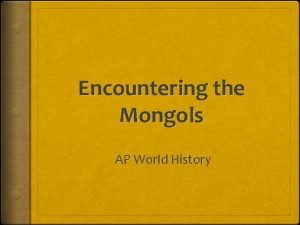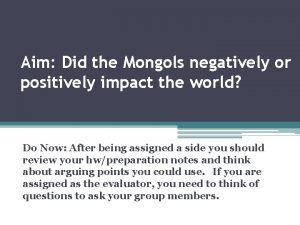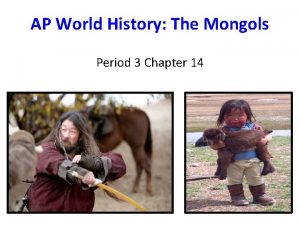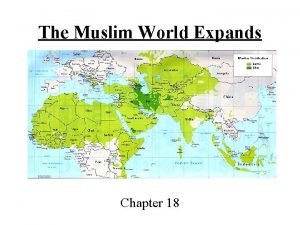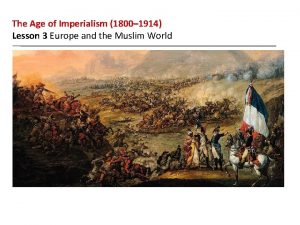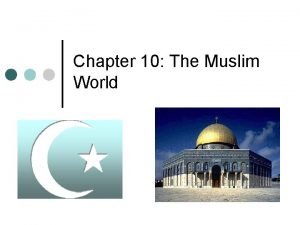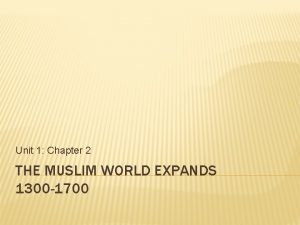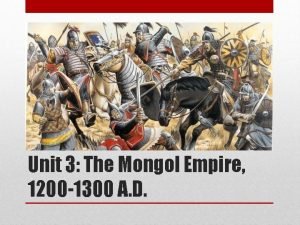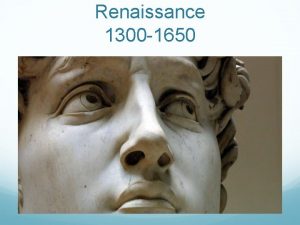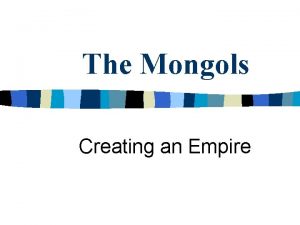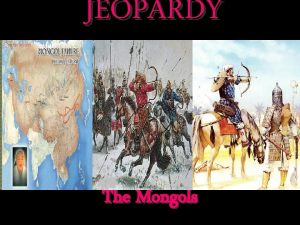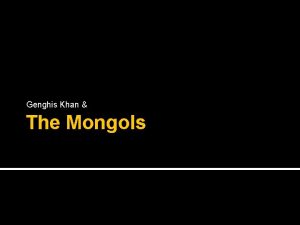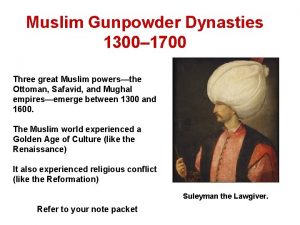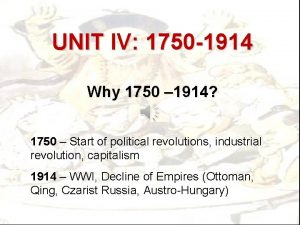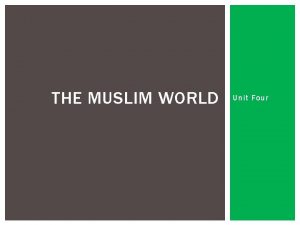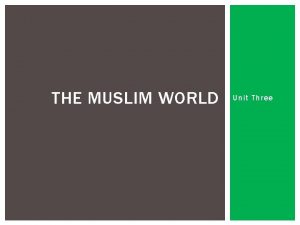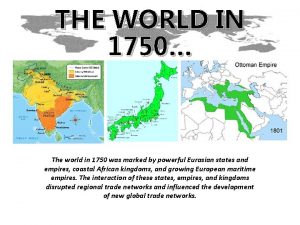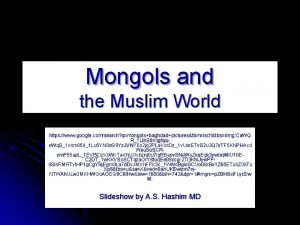The Muslim World 1300 1750 Intro The Mongols










- Slides: 10

The Muslim World, 1300 -1750

Intro The Mongols disrupted what was left of a centralized Muslim Empire (Abbasid caliphate) in the 13 th century After break up of unified Mongol Empire, the Islamic Heartland divided into three major empires Ottoman Empire (based in Turkey – controlled much of Arabian peninsula, North Africa, Balkans) Safavid Empire (based in modern-day Iran) Mughal Empire (based in northern India, modern-day Pakistan) Each was known for blending of cultures and traditions

I. Ottoman Empire Turks based in Anatolia – very militaristic Attacked and raided territories surrounding Byzantine Empire 1300 -1326 - Osman founded small Muslim state Followers called Ottomans Used gunpowder, cannons as means of attack Quickly expanded (dominate force in Middle East until 19 th century) Orkhan I declared himself sultan – “overlord” or “one with power” Treatment of other peoples Treated conquered people considerably fair Muslims had to serve in army, make required religious contributions Non-Muslims did not have to serve, but paid small tax

I. Continued… Constantinople Not as great a city as it once was, but still controlled important shipping/trading routes Mehmed II, or the Conqueror, attacked – took seven weeks to overtake city’s defenses Opened city to Turks and non-Turks alike – Muslims, Christians, Jews all welcomed equally Renamed it Istanbul State revolved around military organization Devshirme system – boys from conquered Christian territories were drafted, converted to Islam, and trained as soldiers Slaves used to run palace or trained in military Janissaries – elite force loyal only to the sultan, most powerful element of Ottoman military

II. Safavid Empire Restored Persia, ruled by Shi’ite Muslim dynasty Named after Sufi mystic founder, Sail al-Din Worked to spread Islamic teachings among Turkic tribes after collapse of Mongol empire Followers called Red Heads, after color of their headgear Expansion began in 1499 by 12 -year-old Isma’il Became religious tyrant – anyone that did not convert was killed Son, Tahmasp, expanded empire to Caucasus Mountains, northeast Turkey , rivaled Ottomans Cultural blending – traditions/culture from Persians, Ottomans, Arabs, Indians

II. Continued… Golden Age of Persia Government Reform Two armies, both loyal to king – one in style of Ottoman’s janissaries Creation of stable bureaucracy – brought in foreign bureaucrats to root out corruption Became more religiously tolerant over time – attracted European (Christian) merchants Cultural Achievements New capital city – Esfahan – considered one of the most beautiful in the world Persian carpets were demanded all over the globe

III. Mughal Empire 1494 – Babur, an 11 -year-old boy, inherited a small kingdom north of India Was driven south by tribal elders – laid foundations for Mughal Empire Great military leader, also appreciated the arts 1556 -1605 – Akbar, Babur’s grandson, united much of India Was able to unite 100 million people through political and military strength Tolerant of all religions and beliefs – included many views in his court Abolished tax on Hindu pilgrims and other non-Muslims Created new belief system – Din-i-Ilahi – that blended many other beliefs in attempt to unite Muslims and Hindus

III. Continued… After Akbar Continued religious conflict Emergence of Sikhs – nonviolent religious sect with beliefs similar to Hinduism and Sufism (Islam) Expansion of the arts Blending of Persia and Hindu aesthetics Built Taj Mahal – memorial to wife of Shah Jahan Decline of Mughal Empire Leaders began to stray from the tolerance introduced by Akbar Enforcement of strict Islamic laws No drinking or gambling, writings were censored High taxes imposed for expansion – led to social unrest, division of empire into regional principalities

Constantinople

The Taj Mahal
 Mongols in russia ap world history
Mongols in russia ap world history The mongols in world history webquest
The mongols in world history webquest How did the mongols positively impact the world
How did the mongols positively impact the world The mongols in world history
The mongols in world history Hulegu ap world history
Hulegu ap world history Chapter 18: the muslim world expands answer key
Chapter 18: the muslim world expands answer key For which reason did persia attract foreign
For which reason did persia attract foreign Chapter 10 the muslim world
Chapter 10 the muslim world The muslim world expands
The muslim world expands The mongol empire spans eurasia worksheet answer key
The mongol empire spans eurasia worksheet answer key 1650-1300
1650-1300
